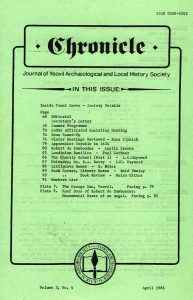1986-Apr-pg88_Littlecote House
This article came from the Chronicle published April 1986. Page 88-89
LITTLECOTE HOUSE
Author: I. Brice
Last Spring, with members of the local National Trust Society, we visited Littlecote House, a large Tudor manor near Hungerford, set in a huge park by the River Kennet. In the 15th century, Littlecote was the home of the Darrell family, who lived there until 1589, then William Darrell was killed in a hunting accident. The property then passed to Sir John Popham (Lord Chief Justice) and it remained in the Popham family until 1922, when the estate was purchased by Sir Ernest Wills, the tobacco magnate. His grandson sold it two years ago to the multi-millionaire yachtsman Peter de Savary. It is said that Henry VIII courted Jane Seymour here and their initials, united by lover’s knots, can be seen on one of the roundels in the south window of the Great Hall. The Hall is 46 feet long and contains a unique collection of Cromwellian armour and weapons. The Royal Armouries has bought this collection for £580,000. with the aid of a donation from J. Paul Getty Jnr. but it remains at Littlecote. The armour and buff leather coats were worn by Colonel Alexander Popham’s private army, which fought against Charles I. The Colonel, finding it to his advantage, hurriedly changed sides and helped to restore Charles II to the throne. For his astuteness he received a royal pardon and the Merry Monarch” graciously visited Littlecote in 1663.
The drawing room reflects the 18th century fashion for chinese art. The walls are covered with Chinese hand-painted paper and the Chippendale chairs and settees still retain their original petit and gros-point needlework seats. Amongst the many rare and interesting books in the library, are the 16th century law books of Chief Justice Popham. The Dutch Parlour is a most amazing room. It is so called because some of the paintings which cover every inch of the walls, were supposedly painted by Dutch prisoners of war. Occupying most of the west wall is a panel depicting scenes from the story of Don Quixote. The room has little furniture, the emptiness emphasising this strange jigsaw of paintings.
The Cromwellian Chapel is believed to be the only complete example of such a chapel remaining today. There was no altar but in its place an extra high pulpit to enable the stern Puritan preacher to have a good view of his flock. The long Gallery, 110 feet long by 18 feet wide, is one of the finest of its kind in the country. It contains numerous interesting, precious and exotic works of art, including a beautiful Queen Anne needlework carpet and Chippendale armchairs covered with needlework of similar design.
There are several beds in which royalty are reputed to have slept. Elizabeth I stayed at Littlecote in August 1601 and the Prince of Orange visited on the 8th and. 9th December 1688. One bedroom is believed to have been the scene of a sad and rather sinister story. Apparently, a midwife by the name of Barnes was blindfolded and taken in secret to a large house where she delivered a baby boy to a lady of “high. estate”. A man waiting on the landing outside the bedroom, snatched the infant from the nurse’s arms and before her horrified gaze, dashed it into a blazing fire. Although precautions for secrecy were taken, the midwife talked and suspicion led to Littlecote.
Unfortunately, many of the treasures from this ancient house have been sold. Sotheby’s recently held a major sale of many of the contents, as the present owner is said to be thinking of selling the estate, or turning it into a theme park.
Littlecote has another attraction, a dwelling far more ancient than the House. In 1727 Mr. William George, an estate steward, located a mosaic pavement in the grounds. Excavations of the Roman villa started in 1979 and are still continuing. The day we visited tile site it was raining and a cold wind was ruffling the waters of the Kennet. An archaeologist showed us around, describing with pride the mosaic, which is indeed most beautiful and in perfect condition. It depicts Orpheus playing a lyre, surrounded by four goddesses and four running animals. The goddesses are probably Aphrodite holding a mirror, representing Spring and Re-birth; Leda holding Zeus as a swan, representing Summer and Youth; Demeter holding a vine staff, as Autumn and Maturity and finally, Persephone descending into the underworld as the goddess of Winter and Death. This pavement was probably the floor of the pagan Orphic temple during the 4th century. The Roman family who lived here must have been quite influential as their home was extensive, having 39 rooms. These included, in addition to the private living quarters, the servants rooms, kitchens, workshops, store rooms and a bath suite.
There is still much work to be done and our guide was very anxious that his Society should be allowed to continue the work. So we left the ancient stones of the Roman villa and temple by the gentle waters of the River Kennet and the grand and proud manor of Littlecote to their uncertain future.
